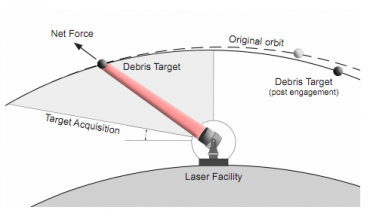We are messy, the lot of us, we don’t like cleaning our closet and we blame it on the entropy! But you know what is really crossing a line? Throwing our junk out in space, because hey, with 7.5 billion of us, there’s hardly any space left, so we take the party to space! Now, it isn’t our smelly socks, or the milk bottle from two days ago that we are talking about. It is the special, more dangerous kind of junk: Space Junk. Ever since the first satellite was sent to space, history changed. Soviet Union’s Sputnik 1 was the size of a beach ball and weighed 83.6 kgs. America was caught unawares and thus began the space race. Flash forward to 2018 and we have 1,100 active satellites and 2,600 inactive ones, and sputnik is still just, there.

Consequences:
If we keep going this way with our old communication satellites and jettisoned booster rockets, someday the International Space Station can be hit with space debris and it will be too late to do anything. It is expensive to de-clutter the junk than it is to leave it be, which is why there is an increase in density of space junk over the years. NASA and the European Space Agency state that there exist more than 100 million pieces of space debris circling around the Earth. Of these, more than half a million are between 1 centimeter and 10 centimeters. There are at least 21,000 pieces larger than 10 centimeters. This space junk circles around uselessly at speeds of up to 17,500 miles per hour.

An object as insignificant as a paint chip can cause cracks in the windows. I am not making this up, this actually happened with ISS in 2016. An object millimeter sized can cause a dent 100 times bigger than itself. So, what do we do? Can’t we just summon the garbage picking patrol of the galaxy to pick up all our trash, the way we do it here on Earth? Well, obviously not.
Clean up the space junk
Well, even for touching a certain space junk, you need the permission of the country which put it up there in the first place. So, it’s expensive to get it back here, there’s lots of tight laws one has to shimmy through, not to forget the enormous brain power required to figure out ways to get it down. Phew, no wonder nobody wants the trash back. However, there are ways to get rid of the space junk.
Laser for junk!
Things become super cool whenever lasers are involved. So, one such way of cleaning junk while also having fun, was introduced by China. High-energy pulsed laser radiation may be the most feasible means to mitigate the threat of collision of a space station or other valuable space assets with orbital debris in the size range of 1–10 cm. the laser can be kept either on Earth or in space, but keeping it in space is preferred. Space debris can be ablated or burnt with the use of lasers. This is an effective way of neutralizing all the space junk that might ever come our way.

Net, Harpoon, and sails.
RemoveDEBRIS is one such project intended to demonstrate various space junk removal techniques. One of their experimenst involved nets.
DebrisSat 1, a cubesat, will deploy a balloon meant to simulate a piece of space debris. From a short distance away, the RemoveDEBRIS satellite will attempt to capture the debris in a net and then manoeuvre this piece of junk to fall into Earth’s atmosphere and burn up, thus destroying it completely. In yet another mechanism, Harpoon and deployable target will be utilized. A harpoon connected by a tether will be fired at a plate attached to an arm extending from the RemoveDEBRIS platform itself. These work simultaneously, in tandem. The last experiment is called Dragsail which will work like an air brake. Dragsail will bring RemoveDEBRIS from low orbital altitude of the space station into the planet’s atmosphere, to disintegrate safely.

Electricity
JAXA (Japanese Aerospace Exploration Agency) planned on using electrodynamic tether whose current would slow down the speed of satellites or space debris. This will make the satellite gradually fall to Earth, where it will vaporize and thus, be destroyed
This growing problem presents future students with numerous research prospects and loads of opportunities. Innovative and inexpensive ideas are always welcome!
Further Reading:

